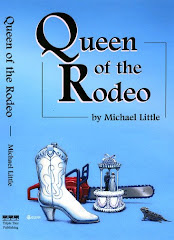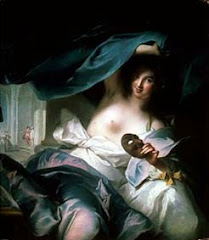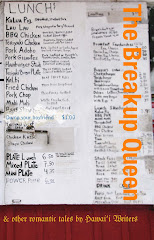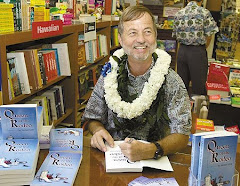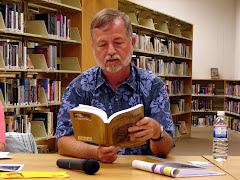In the middle of Frank Delaney's novel Ireland, an engaging 560-page narrative about Ireland and Irish storytellers, there's one paragraph that jumped off the page at me and said "Take me home with you." Or perhaps it whispered "Kiss me, I'm Irish." Whatever. But it's a memorable paragraph for all writers, and readers, and here it is.
A story has only one master—its narrator; he decides what he wants his story to do. I know, I have always known, what I want my stories to achieve—I want to make people believe. Believe what I tell. Believe in it. Believe me. Belief is the one effect I'm always looking for, and I apply every device, every pause, every gesture, every verbal nuance and twirl, to that end. To achieve it, I myself have to believe; if I don't, who will? I must believe ancient Ireland was as I describe it. The swords really did ring loudly off the shields. And the armor surely gleamed in the sun.
It’s just one of thousands of paragraphs in a novel chock full of delightful Irish stories-within-the-big-story, but there it is on the top of page 278, like a gold nugget that I discovered when I turned the page.
The paragraph is the beginning of a chapter-long letter written by the master storyteller, an elusive oral storyteller whom our young protagonist pursues around Ireland, telling his own stories along the way. Most of the advice in the letter applies to the oral tradition, but much of it also shines a light into the dark corners of the written story.
The narrator is the master of the story. A fiction writer narrates his story, whether he uses third-person narration or lets one of his characters tell the story first-person. Even in the quiet telling of the written story, the voice of the narrator rings out.
It’s almost the first decision I make in creating a story—selecting the point of view. In “Pickles and Shawnilynn and Me at the Mall,” a short story about three 8th-graders who spend an afternoon at Kahala Mall, the voice of Anna, the “Me” of the title, sings from first sentence to last. She is the master of the story, and letting her narrate was the perfect choice, even if it meant much time spent asking friends and strangers about current teenage slang and favorite teenage shops at the mall, and then visiting some of those shops. Just a word of warning—the Hello Kitty shops (Sanrio Surprise at Kahala Mall, in case you want to verify this) are incredibly, and dangerously, pink. Sunglasses would have helped. My eyes were sore for days afterwards.
“I want to make people believe,” Delaney writes. “Believe what I tell. Believe in it. Believe me.” I read the paragraph in Ireland long after I wrote the “Pickles” story, but these words describe exactly how I felt about my short story as I was writing it. Part of the believing deal is getting the setting and details right. Yes, Carl’s Jr. is right next to the Kahala Theatre movies at the mall. Yes, you can see school kids sitting there eating their French fries and talking. And yes, you can go to Claire’s and buy blueberry nail polish. After the movie your mom might pick you up in front of Long’s. Easy to believe.
“To achieve it,” Delaney continues, “I myself have to believe; if I don’t, who will?” Absolutely true. The writer is the first reader. He must convince himself first. I carried Anna and her two best friends around in my head for weeks before I wrote a word of their story. And as I began to write the story she became more real.
Then I had a chance to read the “Pickles” story aloud for the first time to a group of writer friends, in a workshop on voice. As I read Anna’s story, she became more real to me than most of the teenagers I’ve met. She was in my head, and I was riding along inside her head, at least for one Saturday afternoon at Kahala Mall, as she and Pickles and Shawnilynn watched the Ratatouille movie and Anna told about the big surprise and the super cool stuff that happened at the mall. Of course I believe.
Frank Delaney’s Ireland is a hymn to the joy of storytelling. Now there’s a phrase I want to take home with me, “the joy of storytelling.” If the story doesn’t bring me joy, how can I expect it to bring joy to a reader? Or a listener, for now that I think of it, I realize that my favorite stories are also great read-aloud stories. Give me a good narrator, the “master” of the story, let me hear that narrator’s voice as the story spins out, draw me into the story, in from the cold, and I am home free.
“Pickles and Shawnilynn and Me at the Mall” is scheduled for publication in October 2009 in the next collection from Bamboo Ridge Press in Honolulu (Anna’s hometown, by the way, and home to Kahala Mall and the frightening pink shop).






